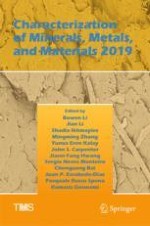2019 | Book
Characterization of Minerals, Metals, and Materials 2019
Editors: Dr. Bowen Li, Dr. Jian Li, Shadia Ikhmayies, Prof. Dr. Mingming Zhang, Yunus Eren Kalay, Dr. John S. Carpenter, Prof. Jiann-Yang Hwang, Prof. Sergio Neves Monteiro, Dr. Chenguang Bai, Dr. Juan P. Escobedo-Diaz, Dr. Pasquale Russo Spena, Ramasis Goswami
Publisher: Springer International Publishing
Book Series : The Minerals, Metals & Materials Series
